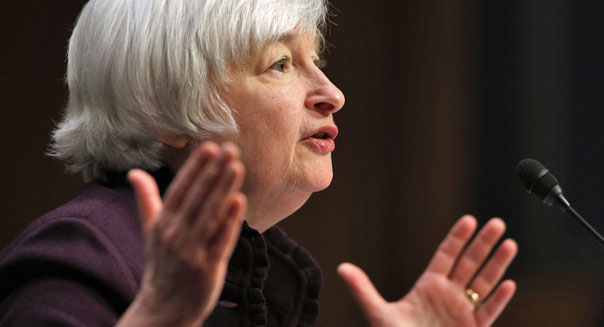Filed under: Earnings, Market News, Mergers & Acquisitions, Investing
Citigroup grabbed the spotlight Monday -- for reasons both positive and negative -- while Wall Street continued its march higher as earnings season started to kick into high gear.
The Dow Jones industrial average (^DJI) gained 111 points, the Nasdaq composite (^IXIC) rose almost 25 points and the Standard & Poor's 500 index (^GPSC) was up by 9 points.
All eyes were on Citigroup (C) on Monday. The bank agreed to pay $7 billion to settle charges related to mortgages it sold before the financial crisis, and it also beat on earnings. The stock closed 3 percent higher. This week is jam-packed with banks coming out with their results. Bank of America (BAC) and JPMorgan Chase (JPM) were up around 1 percent ahead of releasing their results.
Some acquisition activity boosted other stocks. Pharma company Mylan (MYL) is buying part of Abbott Laboratories' (ABT) business for $5.3 billion in stock. Mylan gained 2 percent and Abbott was higher by more than 1 percent.
Engineering firm URS (URS) is going to be acquired by rival Aecom Technology (ACM) in a deal valued at around $4 billion. The news sent both stocks sharply higher. URS gained 12 percent and Aecom was up 10 percent.
And a report in an Israeli newspaper that drugmaker Perrigo (PRGO) might be on the auction block sent its stock higher by more than 8.5 percent.
Elsewhere in deal news, British soccer team Manchester United (MANU), which is a publicly traded company in the U.S., rallied more than 4 percent on news that Adidas will be sponsoring the team for 10 years and paying them $130 million a year for the honor. It will be the largest uniform sponsorship deal in history.
Apple (AAPL) got a 1 percent boost from an upgrade at Barclay's. EBay (EBAY) fell half a percent on a downgrade and TripAdvisor (TRIP) dropped less than 1 percent on a downgrade as well. But the downgrade to neutral from Nomura is mainly because the TripAdvisor has had a 25 percent run up since the beginning of the year.
-Produced by Karina Huber.
What to Watch Tuesday:
- At 8:30 a.m. Eastern time, the Commerce Department releases retail sales data for June; the Federal Reserve Bank of New York releases its latest survey of manufacturing conditions in New York state; and the Labor Department releases import and export prices for June.
- The Commerce Department releases business inventories for May at 10 a.m.
- Cintas (CTAS)
- Comerica (CMA)
- Commerce Bankshares (CBSH)
- CSX (CSX)
- Goldman Sachs (GS)
- J.B. Hunt Transport Services (JBHT)
- Johnson & Johnson (JNJ)
- JPMorgan Chase (JPM)
- Pinnacle Financial Partners (PNFP)
- Yahoo (YHOO)







 June turned out to not be a great month for retail sales. The Census Bureau reported that advance monthly sales for retail and food services rose by only 0.2% to $439.9 billion on a seasonally adjusted basis. Bloomberg was calling for a gain of 0.6%.
June turned out to not be a great month for retail sales. The Census Bureau reported that advance monthly sales for retail and food services rose by only 0.2% to $439.9 billion on a seasonally adjusted basis. Bloomberg was calling for a gain of 0.6%.



 Fed Chair Janet Yellen is delivering her semiannual Monetary Policy Report in front of Congress on Tuesday. The testimony is before the Committee on Banking, Housing and Urban Affairs of the Senate. Her speech likely will be repeated in front of the House committee, and market watchers look more at answers in the Q&A session.
Fed Chair Janet Yellen is delivering her semiannual Monetary Policy Report in front of Congress on Tuesday. The testimony is before the Committee on Banking, Housing and Urban Affairs of the Senate. Her speech likely will be repeated in front of the House committee, and market watchers look more at answers in the Q&A session. The Consumer Electronics Association (CEA) is now looking for 2014 to be an all-time record high for global consumer electronics. Its semi-annual sales forecasts signaling that consumer electronics revenues will be up by 2% to $211.3 billion in 2014.
The Consumer Electronics Association (CEA) is now looking for 2014 to be an all-time record high for global consumer electronics. Its semi-annual sales forecasts signaling that consumer electronics revenues will be up by 2% to $211.3 billion in 2014. Inflation in international trade will be nothing to scare the Federal Reserve into a major inflationary panic. June's import and export prices were more than just tame. Export prices were down by 0.4% on a month-over-month basis. Bloomberg was calling for a gain of 0.2%. Those same export prices annually were up by only 0.2%.
Inflation in international trade will be nothing to scare the Federal Reserve into a major inflationary panic. June's import and export prices were more than just tame. Export prices were down by 0.4% on a month-over-month basis. Bloomberg was calling for a gain of 0.2%. Those same export prices annually were up by only 0.2%.
 On Wednesday morning the markets will have to deal with yet another reading on inflation — albeit at the wholesale level. The US Labor Department will report its reading for the Producer Price Index (PPI) for the month of June. It would not be too surprising to see the numbers come in a little hotter than expected because of agriculture and energy price trends in June. Still, this may be temporary even if it is hot. Another thing to consider is that this may not mean that the Fed is getting ready to hit the panic alarm button if the reading is higher than expected.
On Wednesday morning the markets will have to deal with yet another reading on inflation — albeit at the wholesale level. The US Labor Department will report its reading for the Producer Price Index (PPI) for the month of June. It would not be too surprising to see the numbers come in a little hotter than expected because of agriculture and energy price trends in June. Still, this may be temporary even if it is hot. Another thing to consider is that this may not mean that the Fed is getting ready to hit the panic alarm button if the reading is higher than expected.







